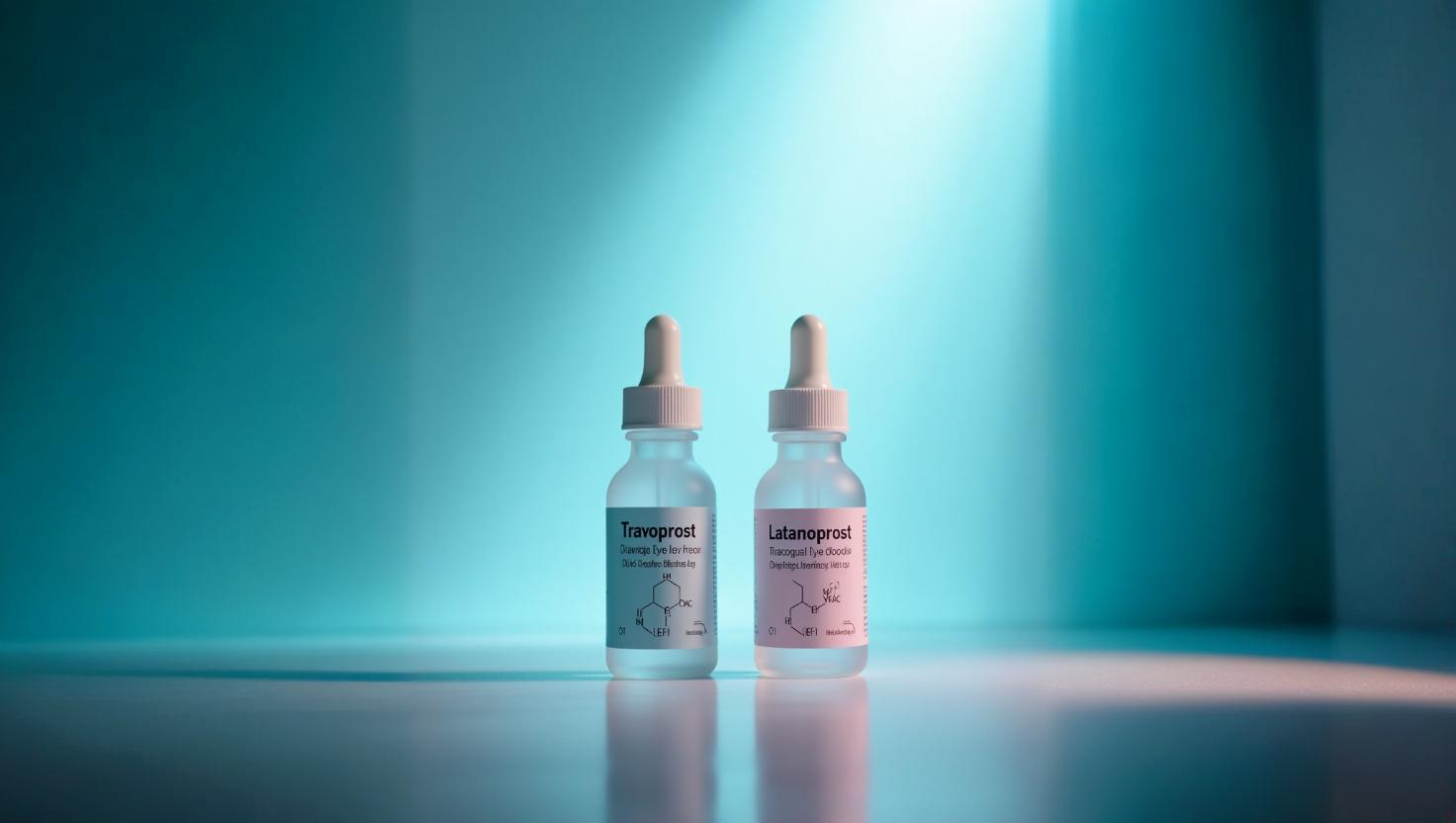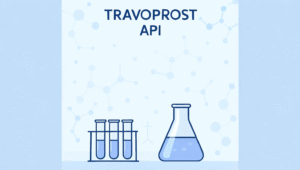
As the global population ages, the prevalence of glaucoma and ocular hypertension continues to rise, making effective treatment options more critical than ever. Among the most commonly prescribed medications for lowering intraocular pressure (IOP) are prostaglandin analogues—particularly Travoprost vs Latanoprost.
While both APIs serve the same therapeutic purpose, their formulation properties, pharmacokinetics, and patient profiles vary significantly. For pharmaceutical companies and formulators developing ophthalmic solutions, understanding these differences is vital for product performance, patient compliance, and regulatory success.
In this detailed guide, we’ll explore a side-by-side comparison of Travoprost vs Latanoprost, backed by clinical, formulation, and manufacturing insights. We’ll also introduce Chemignition Laboratory, a GMP-certified manufacturer and exporter of both Travoprost and Latanoprost APIs, and a trusted partner for companies targeting regulated markets.
Explore a leading manufacturer of APIs.
With over 10 years of expertise, we ensure GMP compliance and provide reliable, high-quality solutions.
Overview: Travoprost vs Latanoprost
| Feature | Travoprost | Latanoprost |
|---|---|---|
| Drug Class | Prostaglandin F2α analogue | Prostaglandin F2α analogue |
| Use | Glaucoma, Ocular Hypertension | Glaucoma, Ocular Hypertension |
| Dosage Form | Eye drops (0.004%) | Eye drops (0.005%) |
| Mechanism of Action | Increases uveoscleral outflow | Increases uveoscleral outflow |
| Dosing Frequency | Once daily (evening) | Once daily (evening) |
| FDA Approval Year | 2001 | 1996 |
Both APIs are effective first-line therapies for reducing elevated IOP, but their chemical properties and formulation behavior are where key differences emerge.
1. Chemical Structure & Stability
- Travoprost is more lipophilic than Latanoprost, contributing to slightly better corneal penetration.
- Latanoprost, however, is more sensitive to light and heat, making it more vulnerable to degradation during storage and handling.
Formulation Insight:
Travoprost’s stability profile makes it slightly more formulation-friendly under broader temperature conditions, while Latanoprost often requires strict cold chain maintenance, especially in multi-dose containers.
2. Formulation Considerations
| Aspect | Travoprost | Latanoprost |
|---|---|---|
| pH Sensitivity | 5.7 – 6.2 | 6.0 – 7.0 |
| Preservatives Used | Often with SofZia™ or BAK | Typically Benzalkonium Chloride (BAK) |
| Stability in Solution | Moderate to High | Moderate (heat/light sensitive) |
| Packaging Needs | Light-resistant, airtight | Light-resistant, airtight |
Travoprost allows greater flexibility with preservative-free or low-irritation formulations, including SofZia, making it a better option for sensitive eyes or long-term users. Latanoprost often requires strict packaging and stabilizers to maintain shelf life.
3. Pharmacodynamics and Efficacy
Both drugs reduce IOP by enhancing aqueous humor outflow, but comparative studies suggest:
- Travoprost may show slightly higher peak IOP reduction (especially in patients with high baseline pressure).
- Latanoprost shows comparable efficacy, but some trials indicate a slightly slower onset of action.
Clinical Trials Note:
A 12-week head-to-head trial showed Travoprost lowering IOP by 8–10 mmHg vs Latanoprost’s 7–9 mmHg, depending on patient response.
4. Tolerability & Side Effects
| Parameter | Travoprost | Latanoprost |
|---|---|---|
| Common Side Effects | Eye redness, itching, iris pigmentation | Eye redness, eyelash growth, irritation |
| Preservative Sensitivity | Lower (SofZia) | Higher (BAK in most formulations) |
| Conjunctival Hyperemia | More noticeable | Less pronounced |
Travoprost has better tolerability in preservative-free versions, while Latanoprost’s BAK-based versions may cause ocular surface irritation in long-term users.
5. Regulatory Support
Both APIs are well-accepted by FDA, EMA, and global regulatory authorities.
| Regulatory Document | Travoprost | Latanoprost |
|---|---|---|
| DMF (US FDA) Available | ✅ Yes | ✅ Yes |
| ASMF (Europe) | ✅ Available | ✅ Available |
| CEP (if applicable) | ✅ May be available | ✅ May be available |
6. Storage and Transportation
- Travoprost: Store between -20°C to -10°C, light-resistant containers
- Latanoprost: Requires stricter storage between -20°C to -10°C, especially prior to opening
Key Concern: Latanoprost and Travoprost increased cold-chain dependency often results in higher logistics costs and export sensitivity.
7. API Sourcing: Purity & Customization
For pharmaceutical companies, the quality and purity of the API are crucial for regulatory approval and formulation success.
Chemignition Laboratory offers:
- 99% purity for both Travoprost and Latanoprost
- Custom packaging (HDPE vials, triple-laminated bags)
- Batch-level COA, SDS, and full stability data
8. Cost Consideration
While Latanoprost is slightly more cost-effective due to mature production, Travoprost is preferred in premium and preservative-free formulations.
Formulator Tip: Consider Travoprost when designing value-added, once-daily, or preservative-free eye drops targeted at sensitive or elderly patients.
9. Chemignition Laboratory: Trusted Manufacturer & Exporter
Chemignition Laboratory is a GMP-certified manufacturer and global exporter of both Travoprost and Latanoprost APIs, serving formulators across Europe, the US, Latin America, and MENA.
Why Choose Chemignition?
- GMP-compliant facility with ophthalmic-grade manufacturing
- Cold-chain logistics expertise
- 24–48 hour global dispatch
- Regulatory support: LOA, CoA, MOA, TSE/BSE declarations
- R&D team for custom batch support and impurity profiling
Chemignition’s dedicated focus on ophthalmic APIs ensures unmatched quality, consistency, and compliance for global buyers.
10. Which One Should You Choose?
| If Your Goal Is… | Choose… |
|---|---|
| Preservative-free or sensitive eye formula | Travoprost |
| Cost-sensitive formulation with BAK | Latanoprost |
| Better corneal absorption | Travoprost |
| High stability under strict cold chain | Latanoprost (with extra care) |
| Regulatory familiarity (longer market time) | Latanoprost |
| Slightly higher efficacy in high IOP cases | Travoprost |
Final Thoughts
While both Travoprost vs Latanoprost have demonstrated remarkable results in glaucoma treatment, the right API for your formulation depends on:
- Formulation goals (e.g., preservative-free vs cost-effective)
- Target markets and regulatory pathways
- Storage infrastructure and cold chain capabilities
- Patient demographic (elderly, sensitive, pediatric, etc.)
Working with a manufacturer who understands these dynamics is key.
✅ Partner with Chemignition Laboratory
As a leading manufacturer and exporter of Travoprost and Latanoprost APIs, Chemignition Laboratory offers:
- Consistent API quality
- Complete regulatory support
- Export documentation for US, Europe, MENA
- Responsive service and expert guidance
📩 Request samples, COA and pricing today.
🌐 Visit www.chemignition.com
FAQs
What is the difference between Travoprost and Latanoprost?
Travoprost and Latanoprost are both prostaglandin analogues used to treat glaucoma and ocular hypertension. The key differences lie in their formulation behavior, tolerability, storage conditions, and preservative compatibility. Travoprost is more stable and often used in preservative-free formulations, while Latanoprost is widely available but more sensitive to heat and light.
Which is more effective: Travoprost or Latanoprost?
Clinical studies suggest that Travoprost may offer slightly higher peak intraocular pressure (IOP) reduction, especially in patients with high baseline pressure. However, both APIs are considered equally effective as first-line treatments in most glaucoma patients.
Can I use the same packaging and storage for both APIs?
Yes, both products should be stored between -20°C and -10°C, and require light-resistant packaging.
Who is the best supplier for Travoprost and Latanoprost APIs?
Chemignition Laboratory is a GMP-certified manufacturer and exporter of both Travoprost and Latanoprost APIs, providing high-purity material, full regulatory documentation (DMF/ASMF), cold-chain logistics, and flexible batch sizes for global pharmaceutical companies.



